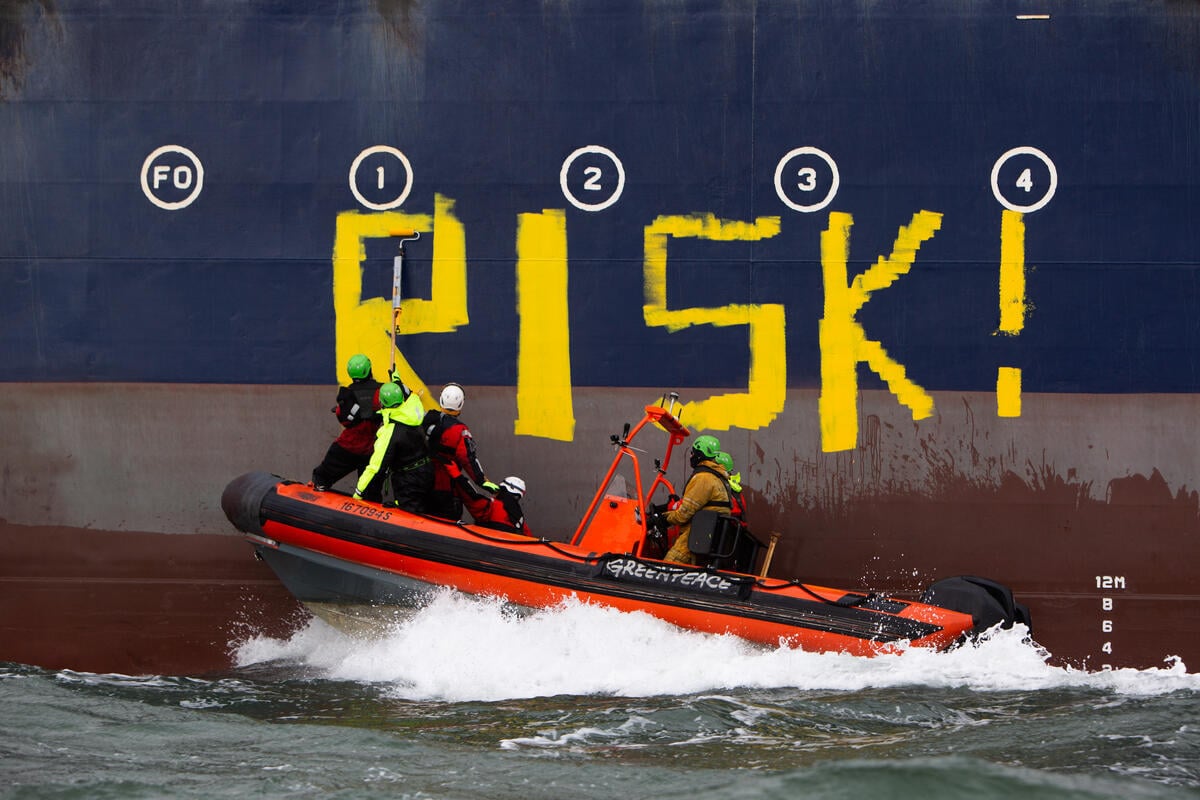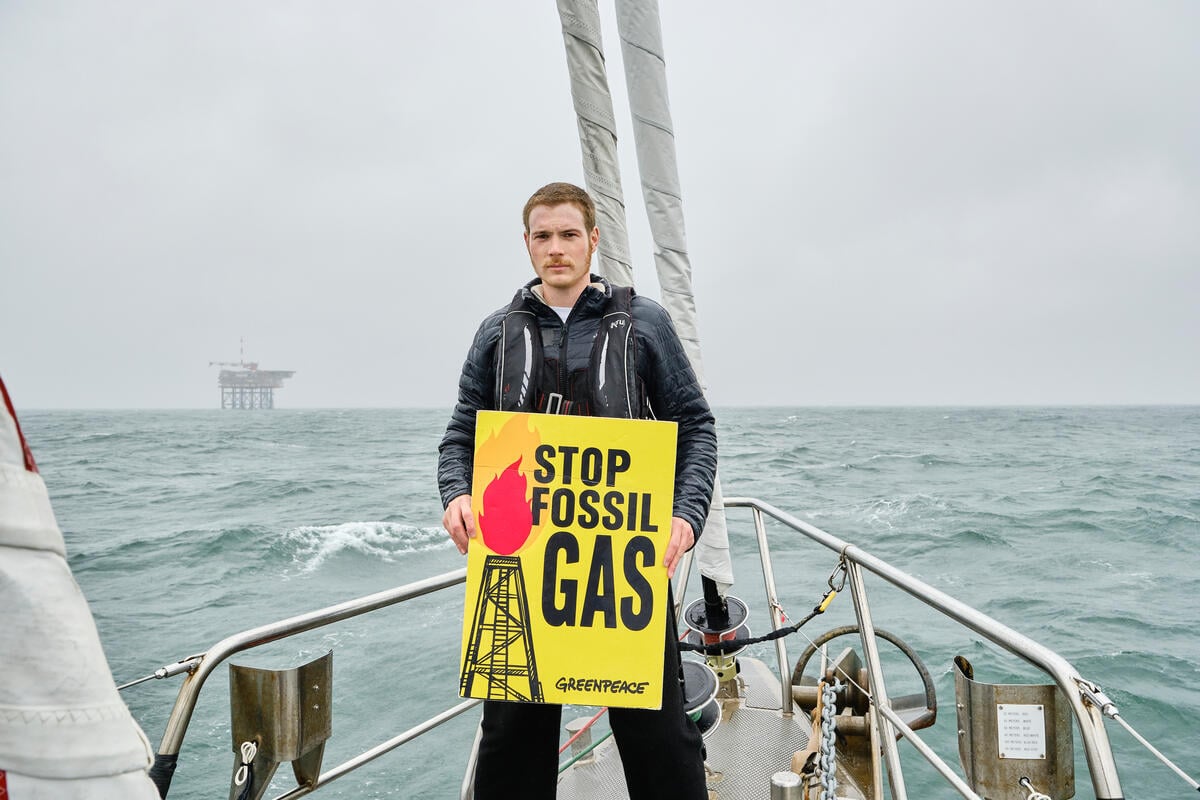Amsterdam, Netherlands – As the ‘Akademik Lomonosov’, a floating nuclear power plant built in St. Petersburg, today entered Danish waters on its journey to Murmansk, it was met by Greenpeace activists forming a peaceful escort, and demanding stricter regulatory measures. [1]
Speaking from aboard the Beluga II, a Greenpeace ship sailing alongside the Russian nuclear plant, Jan Haverkamp, a nuclear expert for Greenpeace Central and Eastern Europe, said:
“This power plant basically moves the threat of a nuclear catastrophe into fragile Arctic waters. With its flat-bottomed hull and lack of self-propulsion it’s like balancing a nuclear power plant on a wooden palette and setting it adrift in some of the world’s roughest waters.”
Russian-built nuclear icebreakers and submarines have an incident-ridden history, which, according to Jan Haverkamp, should cause alarm among nuclear regulators.
“We are urging the international community to demand from Russia a full and independent assessment and oversight of the transport, testing and operation of this floating nuclear power plant, especially considering Rosatom’s ambitions of mass producing these sci-fi fantasy floating disasters,” said Haverkamp.
The reactors on the 144 metres long ‘Akademik Lomonosov’ are smaller than conventional land-based nuclear plants. They will need refuelling every two to three years and nuclear waste will be stored onboard until returned after 12 years of operation.
“The international community, especially Germany and the Nordic countries should recognise the threat that the ‘Akademik Lomonosov’ and any future floating nuclear power plants represent to the spirit and intent of the ban on dumping radioactive wastes in oceans that was agreed a quarter of a century ago,” said Jan Haverkamp, pointing to the London Convention of 1972. [2]
Due to pressure from the public in St.Petersburg and from the Nordic and Baltic countries, the Akademik Lomonosov was not loaded with uranium and tested in St. Petersburg. This will be done in Murmansk later this year. Next year it is planned to be towed 5,000 km through the Northern Sea Route and put to use near Pevek, in the Chukotka Region.
According to Russian media [3], 15 countries, including China, Algeria, Indonesia, Malaysia and Argentina, have shown an interest in hiring these plant that – among other purposes – are intended to provide power for exploration of fossil fuels.
ENDS
Notes:
[1] Greenpeace is demanding:
- A stop on the introduction of floating nuclear power plants in the Arctic and elsewhere.
- A full and unrestricted regulatory oversight by the Russian nuclear regulator Rostechnadzor with peer-review by the nuclear regulators from other Arctic countries.
- A transboundary Arctic Environmental Impact Assessment (EIA) before loading and testing in Murmansk will take place.
- An assessment under the London Convention of the legality of operation of the Akademik Lomonosov as a source of (operational and potential accidental) radioactive releases into the oceans.
[2] The London Convention is available here.
[3] A media source in English here.
Photos and Videos:
https://media.greenpeace.org/collection/27MZIFJXTXNIV
Contacts:
Jan Haverkamp, nuclear expert, Greenpeace Central and Eastern Europe, on board of the Beluga II: +31 621 334 619, [email protected]
Benjamin Holst, communications, Greenpeace Nordic, +4531771100, [email protected]
Andrey Allakhverdov, communications, Greenpeace CEE, +48 794 108 450, [email protected]
Greenpeace International Press Desk, +31 (0) 20 718 2470 (available 24 hours), [email protected]



